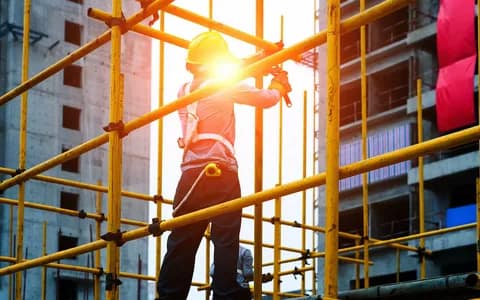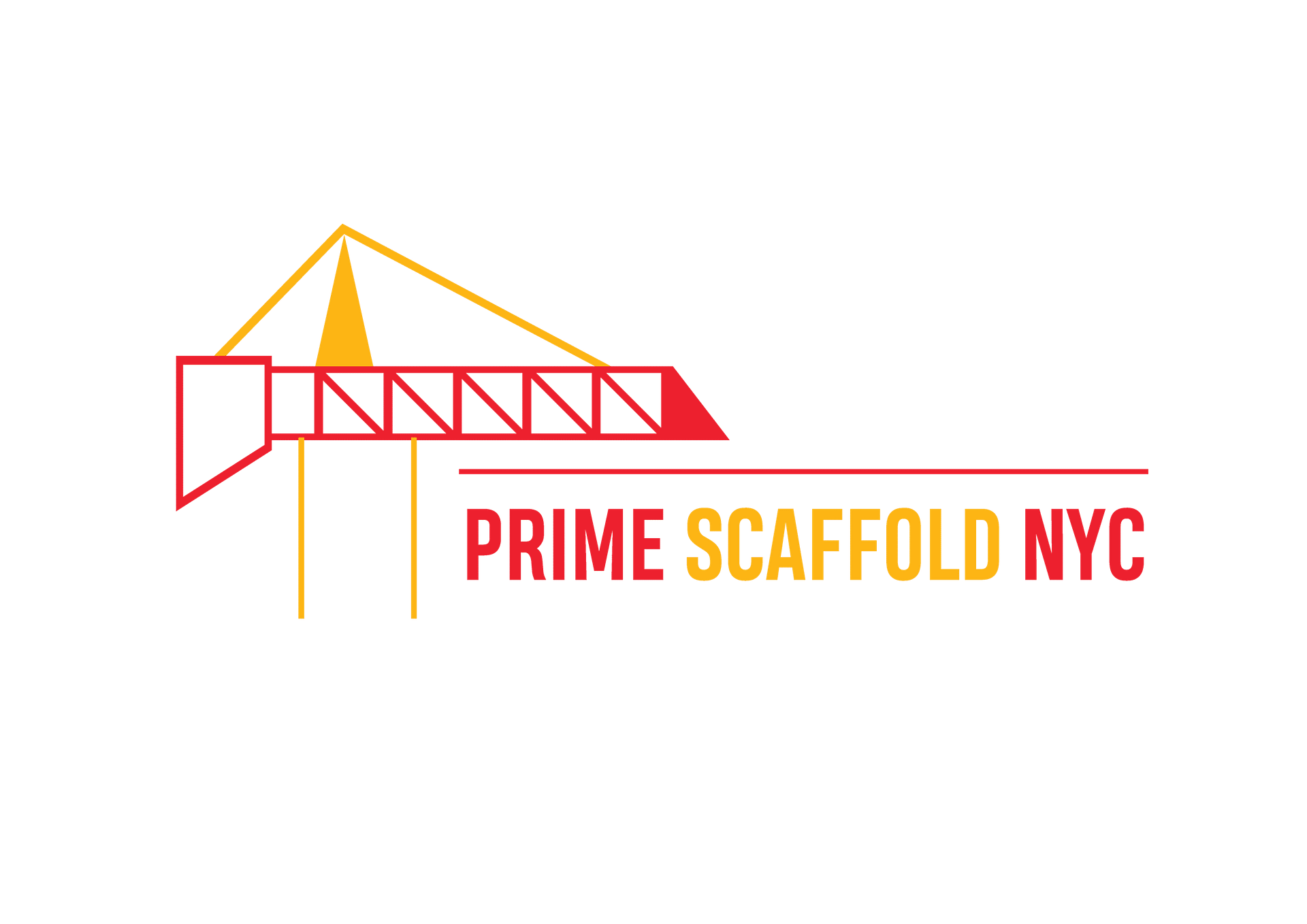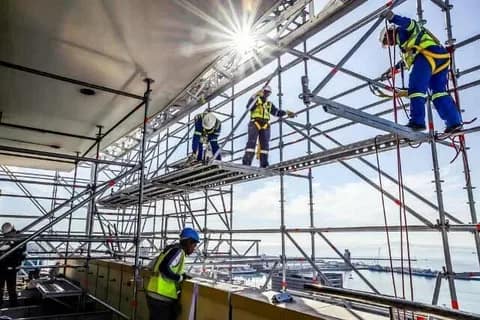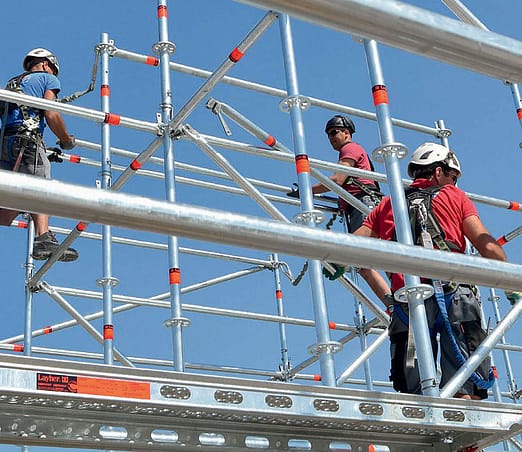
New York City is one of the most demanding environments in the world when it comes to construction, renovation, and façade repair work. With its dense population, towering skyscrapers, tight city codes, and ever-present pedestrian traffic, choosing the right scaffolding company is not just about getting steel erected it’s about safety, efficiency, reliability, and compliance.
The Role and Importance of Scaffolding Companies in NYC
Scaffolding companies are essential service providers in urban construction and maintenance. Their contributions include:
- Access & Work Platform: Scaffolding enables workers to reach façades, roofs, and high-rise areas safely. Without properly designed scaffolds, work at height becomes risky.
- Protection of Pedestrians & Public: In NYC, many work sites are adjacent to sidewalks, public walkways, or streets. Sidewalk sheds, overhead protection, and debris netting protect passersby.
- Efficiency in Construction, Renovation & Façade Repair: Timely delivery, setup, teardown, and adaptability to project changes can reduce downtime and cost overruns.
- Regulatory Compliance and Safety: New York City has rigorous building codes and safety regulations. Scaffolding companies don’t just deliver materials; they ensure systems meet DOB (Department of Buildings) requirements, Local Law 11, OSHA standards, and more.
Because of these responsibilities, the right scaffolding company must balance safety, engineering expertise, cost, timely execution, and exceptional customer service.
What Distinguishes Top-Tier Scaffolding Companies
When you’re choosing among scaffolding companies in New York, here are the criteria and features that often set the best apart:
| Feature | Why It Matters |
|---|---|
| Engineering & Design Expertise | Proper design is critical. Projects often involve irregular shapes, historic façades, or tight spaces. Companies that offer in-house engineers or partnerships for custom scaffolding design can adapt to unique job site constraints. |
| Safety & Inspection Regimen | Frequent inspections, maintenance of equipment, compliance with OSHA & DOB rules are essential to avoid accidents and legal liability. |
| Regulatory Knowledge & Permitting | NYC’s regulatory code is complex. Companies that assist with DOB permits, Local Law 11 compliance, and sidewalk shed permits save clients time and risk. |
| Logistics & Timely Delivery | In a city where delays cost money and create disruptions, companies with strong logistics for delivering, erecting, and dismantling scaffolding promptly make a real difference. |
| Range of Services & Equipment | Some jobs require simple frame scaffolding; others need suspended systems, overhead protection, material hoists, or debris chutes. The more comprehensive the offering, the better. |
| Customer Service & Flexibility | Every project is different. An ideal company listens, produces tailored quotes, responds to changes, and supports clients proactively. |
| Competitive Pricing with Transparency | Hidden costs can undermine value. The best providers are upfront about costs and parameters. |
Prime Scaffold NYC: Meeting Those Standards
Planning & Design Expertise
Prime Scaffold NYC tailors scaffolding solutions to each project’s specific demands—from façade repairs to full building overhauls. Their qualified professionals ensure systems are not generic but suited to each building’s architecture and logistical challenges.
Safety, Regular Inspections, and Compliance
Prime Scaffold NYC makes safety a core part of their value proposition:
-
Regular equipment inspections
-
Adherence to OSHA and DOB regulations
-
On-site safety support during installation and maintenance
Fast Delivery, Efficiency and Customer-Centered Service
They provide prompt delivery and efficient installation across NYC, helping projects stay on schedule. Their team emphasizes customer service, working closely with clients to understand unique requirements.
Competitive Pricing and Value
Prime Scaffold NYC offers competitive pricing without compromising on safety or compliance, making them accessible to both small contractors and large-scale developers.
Regulatory Landscape & Challenges for Scaffolding in New York
Local Law 11 / Façade Inspection & Repair
Buildings over six stories must undergo façade inspections every five years. If hazards are found, scaffolding and protective structures are required until repairs are made.
Department of Buildings (DOB) Codes & Permits
Scaffolding and sidewalk sheds require permits. These cover design, load capacity, guardrails, lighting, and public safety. Noncompliance leads to fines and project delays.
OSHA Requirements
Federal safety standards govern weight limits, guardrails, fall protection, and equipment inspections. Compliance is essential to protect workers and avoid penalties.
Sidewalk Shed / Public Protection Laws
Because scaffolding often extends over sidewalks, rules ensure pedestrian safety through overhead protection, lighting, and safe passageways.
Insurance & Liability
Scaffolding companies must carry proper insurance and bonding. Liability in case of accidents depends on contracts and coverage.
Historic & Environmental Considerations
NYC landmark buildings and dense neighborhoods add constraints. Scaffolding solutions often must consider aesthetics, noise, pedestrian flow, and traffic disruptions.
Comparing Prime Scaffold NYC with Other Scaffolding Companies
| Company | Key Strengths / Services | How Prime Scaffold NYC Differentiates |
|---|---|---|
| Skyline Scaffolding | Full-service scaffolding, sidewalk sheds, shoring, and roof protection. | Prime Scaffold focuses on custom solutions and responsive delivery. |
| Spring Scaffolding | Strong in hoists, supported scaffolds, and sidewalk bridges. | Prime Scaffold emphasizes integrated service with on-site safety support. |
| York Scaffold Equipment Corp. | Established since 1928, large inventory, multiple scaffold types. | Prime Scaffold competes with modern engineering, faster compliance, and personalized service. |
| Other Local Firms | Varying services in pipe scaffolding, material hoists, or debris chutes. | Prime Scaffold sets itself apart with commitment to safety, compliance, and efficient delivery. |
Frequently Asked Questions & Best Practices
How far in advance should I contact a scaffolding company?
Several weeks in advance is best, especially for larger or more complex jobs requiring permits and custom designs.
What kinds of scaffolding systems are available?
- Frame scaffolding – versatile for construction and repair
- Suspended scaffolding – ideal for high-rise façade work
- Sidewalk sheds / overhead protection – protect pedestrians and comply with city laws
- Material hoists – transport workers and heavy loads
- Safety netting and debris chutes – add safety and site cleanliness
Who handles permits and compliance?
Scaffolding companies assist, but owners and contractors share responsibility. Prime Scaffold NYC helps manage compliance and inspection schedules.
What factors influence cost?
- Type and complexity of scaffolding
- Project height and duration
- Permits and inspection fees
- Labor for installation and removal
- Extra safety features like netting or weatherproofing
Best Practices
- Always have a written contract outlining responsibilities
- Schedule regular inspections during the project
- Plan pedestrian and traffic flow around scaffolding
- Budget for unexpected changes or delays
How to Choose the Right Scaffolding Company
- Gather multiple proposals and compare scope, safety, insurance, and pricing.
- Check credentials, certifications, and insurance coverage.
- Ask for references and past projects.
- Confirm safety protocols and inspection schedules.
- Ensure they offer full service (hoists, protection, debris netting).
- Verify permit support and DOB compliance.
- Review contract details and liability clauses.
- Confirm logistics for delivery, erection, and dismantling.
Prime Scaffold NYC scores highly across these categories, making them a strong choice for contractors, property managers, and developers.
Conclusion: Why Prime Scaffold NYC is a Reliable Choice
In NYC’s challenging construction environment, scaffolding is more than temporary steel—it’s the backbone of safety, compliance, and project efficiency. Poorly managed scaffolding leads to safety risks, delays, and costly fines.
- By: Addaim
- 0 comment



Leave a Reply